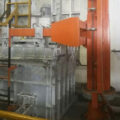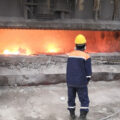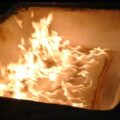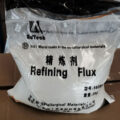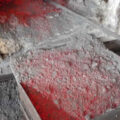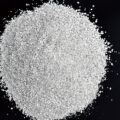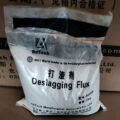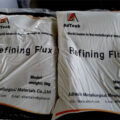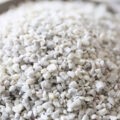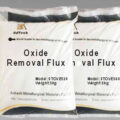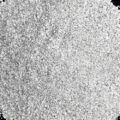AdTech slag removal flux is white with slightly gray powdery fine particles. Slag removal flux helps to achieve aluminum alloy continuous casting and improves the quality and output, prolongs the furnace service life, reduces manual labor, applies to multi-series aluminum alloy casting in the furnace. The main ingredients are chloride and villiaumite, together with other compounds. After appropriate heat treatment and screening, it turns to a uniform size. Spray it with gas from a jar as the carrier, sprinkling in the furnace, the furnace wall, the hard slag on the bottom, to meet the cleaning of the furnace when casting multi-series alloy.

Flux slag removal is based on the use of complex compounds formed by impurities and fluxes. Because when the oxides in the aluminum liquid have a strong binding force with the aluminum casting flux, under certain temperature conditions, they can interact to form a double salt with a smaller density, a lower melting point, and easy separation from the metal. Slag in order to pull them out of the molten aluminum surface. The flux slag removal is mainly carried out on the surface of the molten metal.
The non-metallic inclusions of aluminum melt mainly refer to aluminum oxide. Its properties are dense and tough. Whether in a solid or liquid state, it is easy to form a solid and tightly attached protective layer on the surface. The aluminum oxide film in the molten state will easily become a fine film if it is impacted, causing the greatest harm. Alumina is only 2.3-2.4g/cm3 at high temperature, which is almost the same as the density of the aluminum solution.
Therefore, in the molten aluminum melt, they are actually in a suspended state. Once the oxidized slag is mixed into the cast-rolled strip during the solidification process, it can neither dissolve in the aluminum alloy nor form an intermediate compound with other elements. It can only be distributed in the grain boundary of the grain in a solid state, thereby destroying the grain binding force. Due to the existence of this kind of oxidized slag that destroys the intercrystalline bonding force, it causes many harms, reduces the process performance during pressure processing, makes the metal layered during processing, and produces cracks; makes the product strength unstable, and the elongation rate is greatly reduced.

